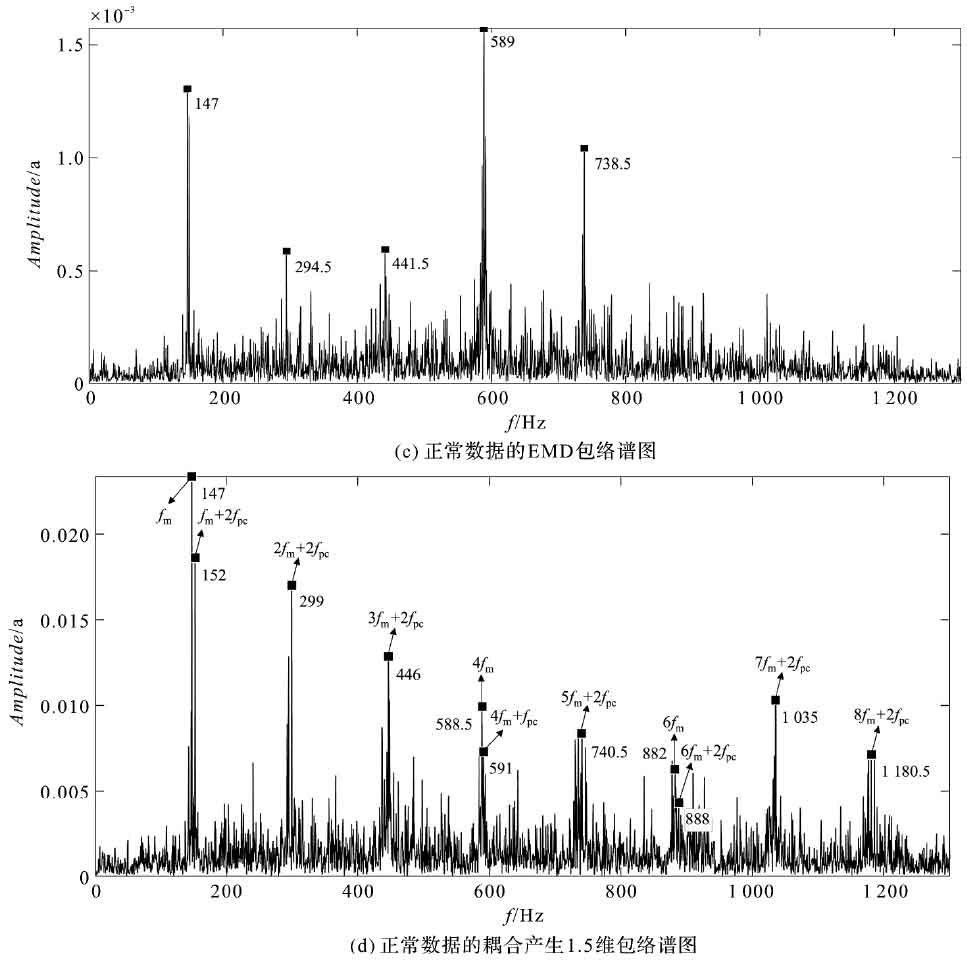In the whole life cycle experiment of planetary gear box, ZHY gear selects three groups of data of different time periods according to the experimental time sequence, and carries out 1.5-dimensional envelope spectrum analysis of coupling generation. With the deepening of tooth surface wear fault, the coupling generation of 1.5-dimensional envelope spectrum is studied In the dimensional envelope spectrum, the variation of characteristic frequency and the coupling relationship between the frequencies provide the basis for the diagnosis of planetary gearbox wear fault.
The spectra of various methods for normal data are shown in the figure.
In figure (a), it can be seen that the Fourier transform spectrum has more noise. At the same time, due to the existence of more frequency components in the planetary gearbox, the spectrum is complex due to their mutual modulation, so it is difficult to find the fault characteristic frequency such as meshing frequency and its multiple frequency.
It can be seen in figure (b) that 1.5-dimensional spectral analysis is generated by direct coupling of signals. Although Gaussian noise can be removed, the former 0-500 can be used It is difficult to extract the low-frequency features because of the strong noise background and the complex transmission path in the planetary gear box operation, which results in the frequency needed to be observed modulated by other frequencies, and the relevant characteristic frequency cannot be extracted. Therefore, the envelope signal should be demodulated by envelope analysis to obtain the fault characteristic signal in low frequency band.
In figure (c), when empirical mode decomposition (EMD) is applied to the vibration signals of normal data, the sensitive intrinsic mode components (IMF) must be selected according to the correlation coefficient method, and then envelope analysis is carried out. It can be seen in figure (c) that after EMD decomposition and envelope analysis, the fault characteristics in low frequency band are highlighted; however, the characteristic frequency of 800 Hz ~ 1 200 Hz is submerged in the noise, which is still difficult to observe, and without 1.5-dimensional spectral analysis, it is difficult to extract the secondary coupling features in the spectrum.
Therefore, after envelope analysis of vibration signal, 1.5-dimensional spectrum analysis in complex domain should be carried out to remove Gaussian noise and retain the components generated by secondary frequency coupling.
In the 1.5-dimensional envelope spectrum generated by coupling in Fig. (d), the meshing frequency FM = 147.05 Hz, the rotation frequency of the third stage planetary carrier is FPC = 2.5 Hz, and the fault frequency of the third stage planetary gear is FP = 7.0 Hz. It can be seen from figure (d) that due to the combination of envelope analysis and 1.5-dimensional spectrum, the noise in the spectrum is greatly reduced, and the meshing frequency and its frequency doubling are obvious. Comparing the direct 1.5-dimensional spectrum analysis and EMD envelope spectrum, we can clearly see the advantages of coupling to produce 1.5-dimensional envelope spectrum.
Here, ZHY gear only summarizes the secondary coupling law, and the other method spectrums of the latter two groups of data are not listed here. It can also be seen in figure (d) that after secondary frequency decoupling, there are frequency components with higher amplitude in the side band of meshing frequency and its multiple frequency, which are the frequency components generated by coupling the meshing frequency and its multiple frequency with the planetary carrier rotation frequency and its frequency multiplication.


